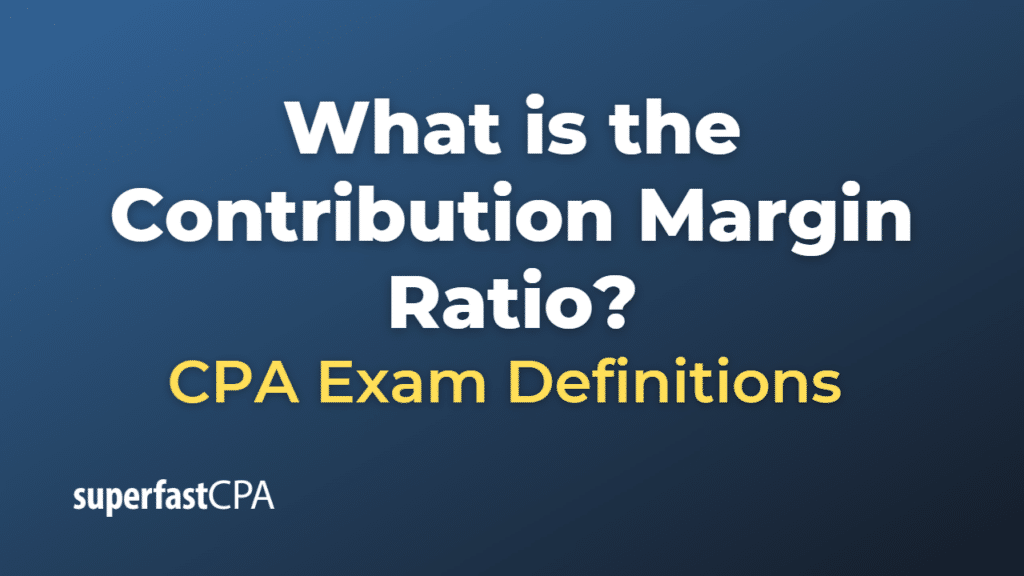Contribution Margin Ratio
The contribution margin ratio (CMR) is a financial metric that expresses the contribution margin as a percentage of total sales revenue. It measures the proportion of each dollar of sales revenue that remains after accounting for variable costs, and it’s available to cover fixed costs and generate a profit. The contribution margin ratio is a useful tool for evaluating a company’s profitability, cost efficiency, and financial performance.
To calculate the contribution margin ratio, use the following formula:
Contribution Margin Ratio = (Contribution Margin / Total Sales Revenue) × 100
Alternatively, you can calculate the CMR using per-unit data:
Contribution Margin Ratio = (Contribution Margin per Unit / Sales Price per Unit) × 100
The contribution margin ratio provides valuable insights for businesses, helping them to:
- Assess profitability: A higher CMR indicates that a larger portion of each dollar of sales revenue contributes to covering fixed costs and generating profit, while a lower CMR means that a smaller portion of sales revenue is available for covering fixed costs and generating profit.
- Make informed pricing decisions: By understanding the impact of pricing changes on the CMR, businesses can make strategic pricing decisions that maximize profitability.
- Evaluate cost efficiency: The CMR highlights areas where variable costs can be reduced to improve the contribution margin and overall profitability.
- Analyze financial performance: The CMR allows businesses to monitor their financial performance over time, making it easier to identify trends and make necessary adjustments.
In summary, the contribution margin ratio is a financial metric that expresses the contribution margin as a percentage of total sales revenue. It measures the proportion of each dollar of sales revenue that remains after accounting for variable costs, which can be used to cover fixed costs and generate a profit. The CMR is a useful tool for evaluating a company’s profitability, cost efficiency, and financial performance, and can inform various business decisions related to pricing, product mix, cost efficiency, and resource allocation.
Example of the Contribution Margin Ratio
Let’s consider a hypothetical example of a company that sells two types of products: Product A and Product B.
Here is the cost and sales information for each product:
Product A:
- Selling price per unit: $50
- Variable cost per unit: $30
- Units sold: 300
Product B:
- Selling price per unit: $80
- Variable cost per unit: $40
- Units sold: 200
First, let’s calculate the contribution margin per unit for each product:
- Product A: $50 (price) – $30 (variable cost) = $20
- Product B: $80 (price) – $40 (variable cost) = $40
Now, let’s calculate the contribution margin ratio for each product:
- Product A: ($20 / $50) × 100 = 40%
- Product B: ($40 / $80) × 100 = 50%
These contribution margin ratios tell us that for every dollar of sales revenue generated by Product A, 40 cents are available to cover fixed costs and generate a profit. For Product B, 50 cents of every dollar of sales revenue are available for the same purpose.
Now let’s assume the company has $9,000 in monthly fixed costs. To determine if the sales revenue from both products is sufficient to cover the fixed costs, we can calculate the total contribution margin:
- Product A: $20 (contribution margin per unit) × 300 (units sold) = $6,000
- Product B: $40 (contribution margin per unit) × 200 (units sold) = $8,000
- Total Contribution Margin: $6,000 (Product A) + $8,000 (Product B) = $14,000
Since the total contribution margin ($14,000) is greater than the fixed costs ($9,000), the company can cover its fixed costs and generate a profit of $5,000.
In this example, the contribution margin ratio helps the company assess the profitability of each product, informing decisions related to pricing, product mix, cost efficiency, and resource allocation. The company may consider focusing on increasing sales of Product B due to its higher contribution margin ratio, or exploring ways to reduce the variable costs associated with Product A to improve its contribution margin ratio and overall profitability.













